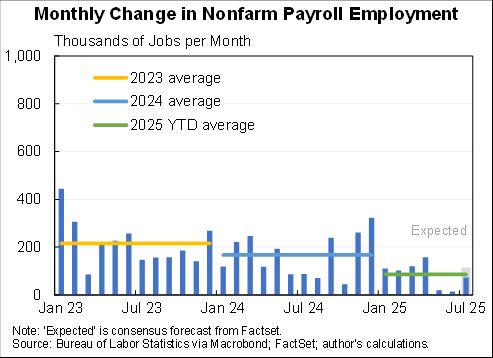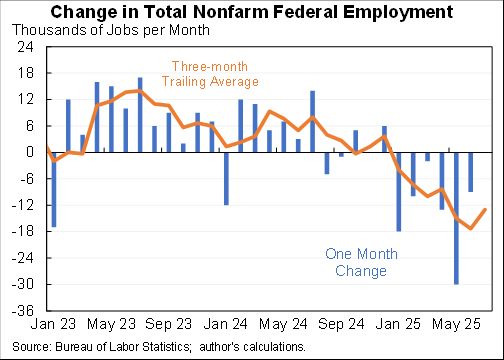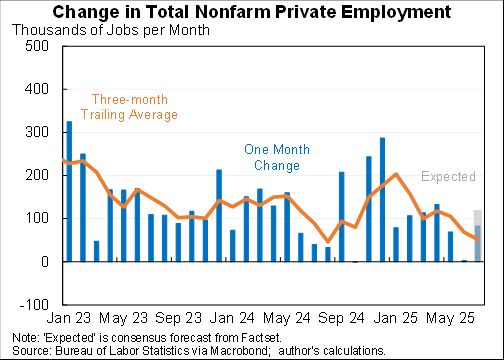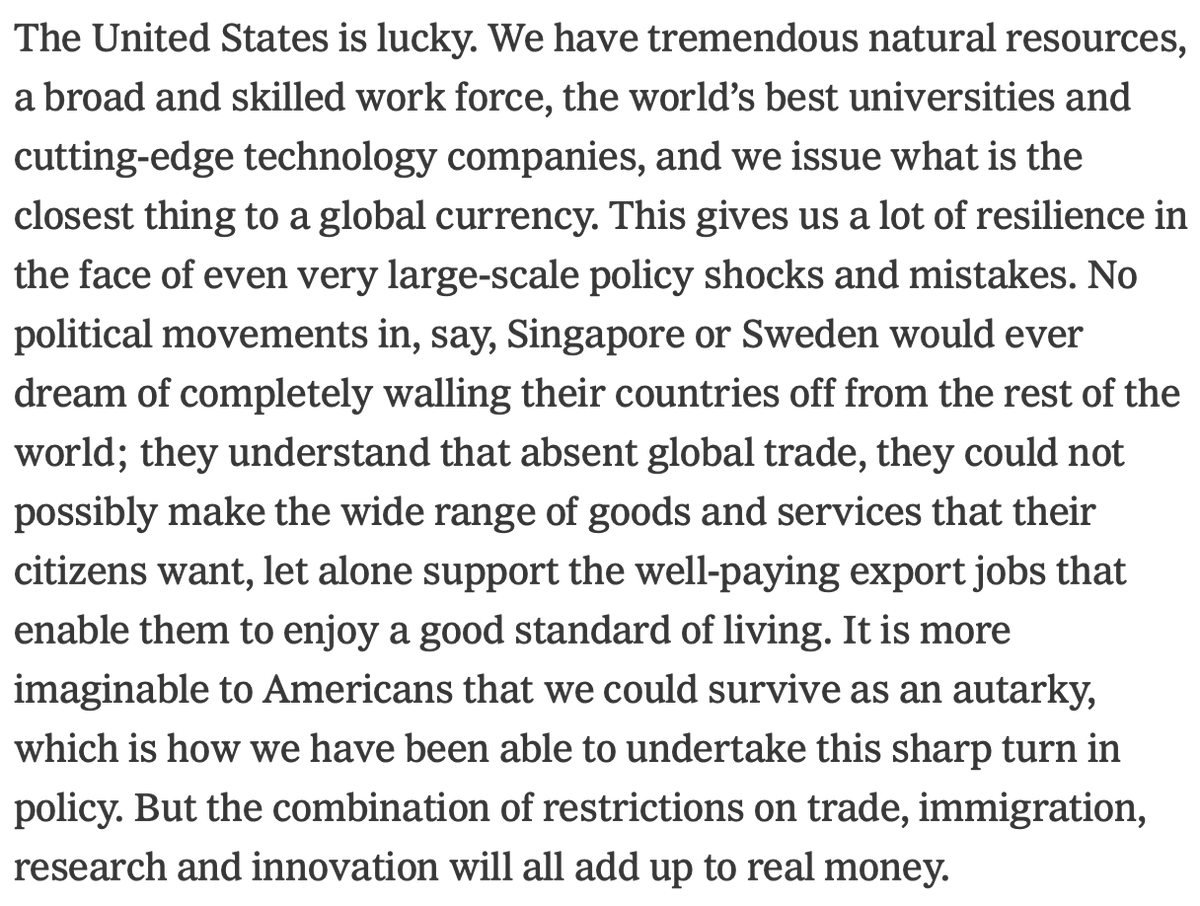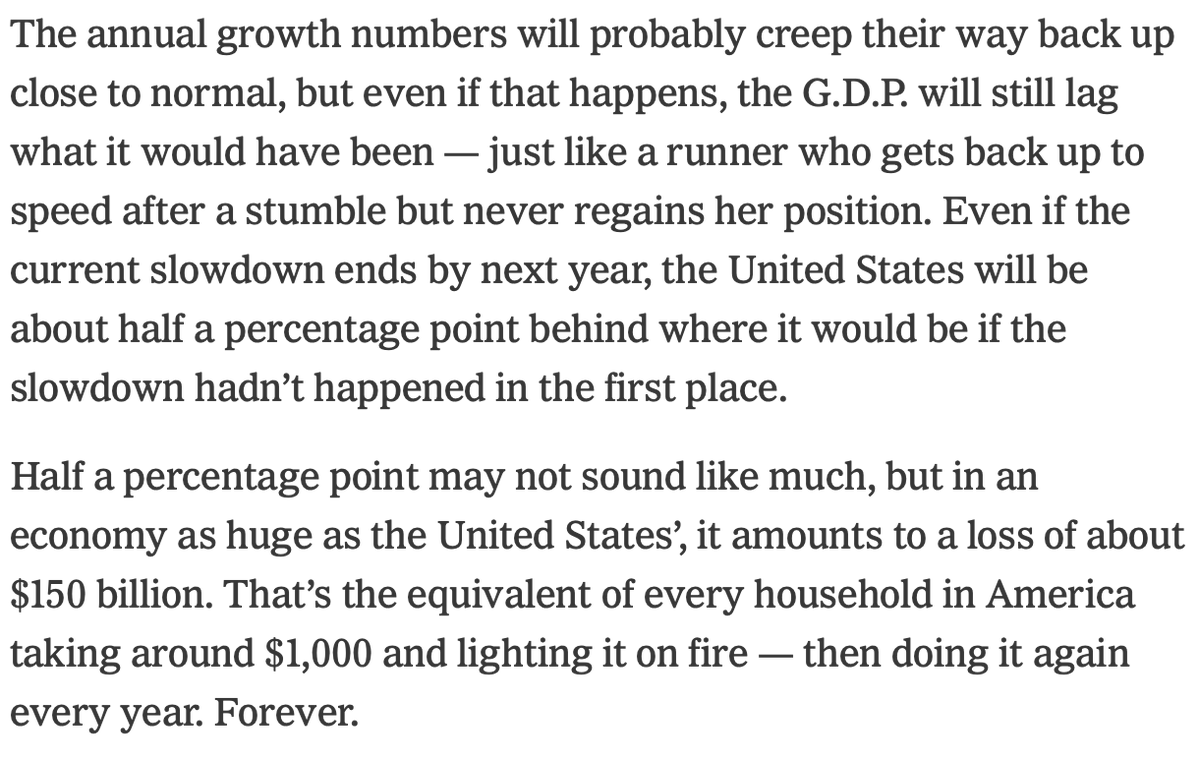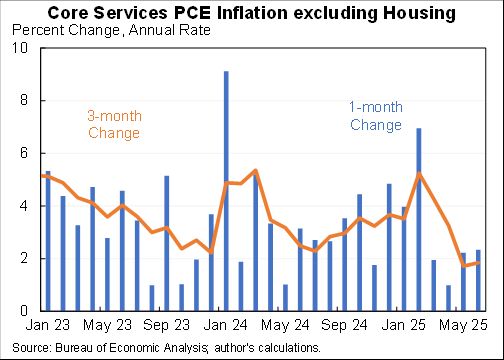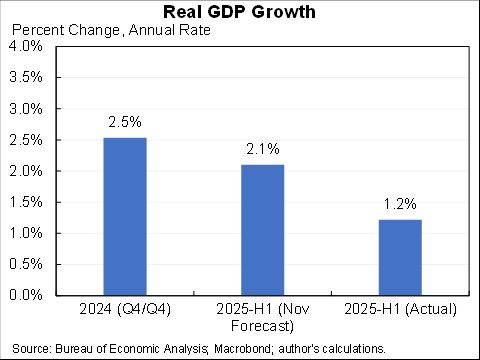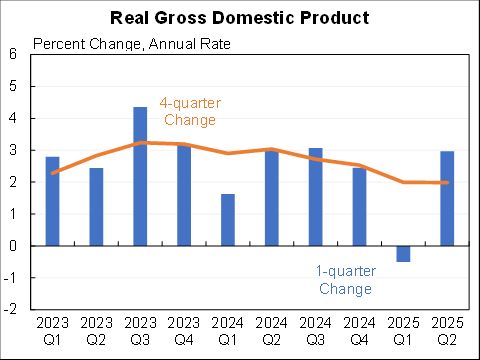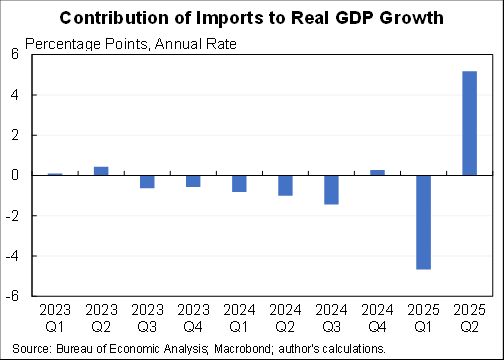A market slowdown in the pace of job gains, with 22K added in August, bringing the three month average to 29K.
On a percentage basis have not seen job growth this slow outside of recessionary periods in more than sixty years.
On a percentage basis have not seen job growth this slow outside of recessionary periods in more than sixty years.

The unemployment rate rose from 4.2% to 4.3% (unrounded was a smaller increase).
Wage growth was strong and average hours steady.
Wage growth was strong and average hours steady.
All of these are consistent with a marked slowdown in labor supply (due to immigration policy) combined with a continued slight softness in labor demand (as evidenced by the unemployment rate which has been steadily rising at about 0.03 percentage point per month for 2-1/2 years. 

Here are the wage data which is another piece of evidence that the labor market is not markedly loosing but instead what is a "normal" labor market is much lower than the job growth we had been used to. 

As an aside, a portion of what we're seeing is Federal job cuts. But the number is quite small compared to everything else. 

In sum, we are seeing a big slowdown in labor supply and some weakness in labor demand. Not a whole lot the Fed can do when the biggest problem is not enough people. But it can and will cut rates, given inflation risks I would limit that to 25bp at the next meeting.
• • •
Missing some Tweet in this thread? You can try to
force a refresh









